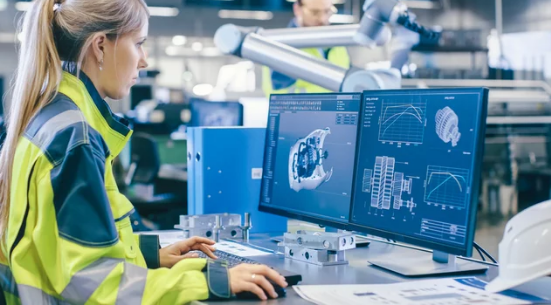As the world searches for sustainable solutions to combat climate change, nuclear power is once again taking center stage. Once seen as a controversial technology, nuclear energy is now being reimagined through cutting-edge engineering innovations designed for the 21st century. Safer reactors, smaller modular designs, advanced digital systems, and even the long-dreamed fusion power are transforming nuclear into a cleaner, smarter, and more versatile energy source.
This article explores how engineers are reshaping nuclear technology, highlighting the innovations that will define its future role in global energy systems.
Why Next-Gen Nuclear Matters
Global demand for energy continues to rise, and with it the urgent need to decarbonize power generation. Renewable energy sources such as solar and wind are essential, but they face challenges of intermittency and storage. Nuclear, by contrast, provides consistent baseload power with zero carbon emissions.
Next-generation nuclear systems aim to address the historical drawbacks of nuclear power—high costs, complex safety concerns, and waste management—through engineering-driven solutions that are more adaptable, affordable, and environmentally responsible.
Small Modular Reactors (SMRs): A New Era of Flexibility
Traditional nuclear plants are massive, expensive projects that take decades to complete. Small Modular Reactors (SMRs) are changing this paradigm.
Key Engineering Advantages of SMRs
- Compact and Scalable: Built in factories and transported to sites, reducing construction time.
- Passive Safety Systems: Designed to cool themselves naturally without pumps or human intervention.
- Adaptability: Suitable for powering remote areas, industrial facilities, or entire cities depending on scale.
Examples of SMR Projects
- NuScale (USA): The first SMR design approved by U.S. regulators.
- Rolls-Royce SMR (UK): Focused on modular reactors for energy security.
- Canadian SMR Roadmap: Aiming to deploy SMRs by the 2030s to support industrial and community needs.
SMRs represent one of the most promising innovations for bringing nuclear power into diverse regions and industries.
Generation IV Reactors: Smarter and More Sustainable
Beyond SMRs, engineers are developing Generation IV reactors—a class of designs that push efficiency, safety, and sustainability further than ever before.
Types of Gen IV Reactors
- Molten Salt Reactors (MSRs): Use liquid fuel mixtures that improve safety and efficiency.
- Fast Neutron Reactors (FNRs): Capable of recycling spent fuel, greatly reducing nuclear waste.
- High-Temperature Gas-Cooled Reactors (HTGRs): Produce not just electricity but also industrial heat for hydrogen production and manufacturing.
Global Examples
- China’s HTR-PM: A high-temperature gas reactor built for both power and industrial applications.
- Russia’s BN-800: A fast reactor actively recycling nuclear fuel.
- TerraPower (USA): Backed by Bill Gates, working on sodium-cooled reactors for flexible power generation.
Generation IV reactors are designed with waste reduction, efficiency, and broader energy applications at their core.
Fusion Power: The Long-Awaited Breakthrough
If nuclear fission powered the 20th century, fusion could power the 21st. Fusion combines light atoms, such as hydrogen, to release massive amounts of clean energy, mimicking the process of the sun.
Engineering Challenges
- Containing plasma at over 100 million °C.
- Designing superconducting magnets strong enough for confinement.
- Creating reactor materials capable of withstanding extreme conditions.
Major Fusion Projects
- ITER (France): The world’s largest fusion experiment involving 35 nations.
- SPARC (USA): A private project aiming for net energy gain within a decade.
- Tokamak Energy (UK): Focused on compact, commercially viable fusion reactors.
Fusion remains experimental, but advances in magnetic systems, AI plasma control, and superconducting materials are moving it closer to commercial reality.
Nuclear and Hydrogen: A Perfect Match
Another engineering innovation lies in pairing nuclear with hydrogen production.
- High-Temperature Electrolysis (HTE): Using nuclear heat and electricity to split water efficiently.
- Hybrid Energy Systems: Combining nuclear with renewables to create low-carbon hydrogen hubs.
- Industrial Applications: Nuclear-powered hydrogen could decarbonize steelmaking, shipping, and aviation.
This integration highlights nuclear’s potential beyond electricity, making it central to a zero-carbon industrial economy.
Digital Innovations: AI and Robotics in Nuclear Systems
Engineering isn’t just about reactors—it’s also about smarter operations.
- AI Monitoring: Detects anomalies in real time, reducing risks and improving efficiency.
- Digital Twins: Virtual replicas of reactors allow engineers to test scenarios and optimize designs.
- Robotics: Used in inspection, maintenance, and decommissioning, keeping workers safe.
These tools bring nuclear energy into the era of digital transformation, making it more reliable and cost-efficient.
Overcoming Nuclear’s Challenges Through Engineering
Despite exciting progress, nuclear still faces challenges. Engineers are addressing them with creativity and innovation:
- Safety Concerns: Passive cooling and multiple fail-safe systems.
- Waste Management: Advanced recycling and secure geological storage.
- High Costs: Modular factory construction and faster build times.
- Public Trust: Transparency in design and real-world performance improvements.
Each challenge pushes nuclear engineers to create better, smarter solutions.
Global Leaders in Next-Gen Nuclear
Different nations are contributing to nuclear innovation:
- USA: Leading in SMRs, digitalization, and private-sector fusion.
- China: Building advanced reactors at record speed.
- France: Hosting ITER and maintaining a strong nuclear infrastructure.
- Russia: Operating advanced fast reactors and exporting nuclear technology.
- Japan & South Korea: Pioneering nuclear safety and hybrid clean energy systems.
These engineering efforts are reshaping nuclear into a truly global solution.
The Road Ahead: Nuclear’s Role in the 21st Century
The next decades will likely see milestones such as:
- SMRs deployed across multiple continents.
- Fusion reactors achieving net energy gain.
- AI-driven, near-autonomous nuclear plants.
- Nuclear-hydrogen hubs powering transport and industry.
With these advances, nuclear could become a cornerstone of the global energy transition.
Conclusion
Next-generation nuclear engineering is redefining what is possible with atomic power. Through innovations such as SMRs, Generation IV reactors, fusion projects, and AI-driven systems, nuclear is moving from a controversial past toward a promising future.
As engineers continue to push the boundaries of design, safety, and efficiency, nuclear energy could emerge as one of the most vital tools for building a cleaner, more sustainable, and resilient world in the 21st century.
Also Read :
